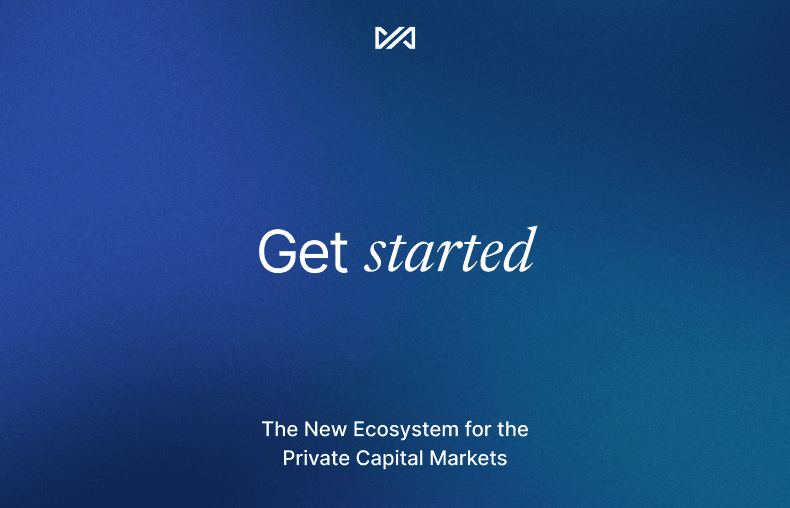Back in 2020, the words “Decentralized Finance (DeFi)” were on the lips of finance experts and were one of the most mentioned fintech terms within the emerging technology environment. In this blog post we will cover a few concepts to understand the overall DeFi market, its origin, and its current status. Shedding light on this space is crucial since new trends constantly arise within this sphere that continue to reshape the world we know.
Initial approach to DeFi
More than three years have passed since that 2020 hot peak, and consequently more people are joining the group of those who understand and adopt this type of technology, both for personal reasons and for doing business.
However if you still haven't fully grasped this concept yet, don’t worry! We’ve got you covered and will go through specific concepts to help you dive into this world.
Decentralized finance history dates back many years, with some associating its beginnings with the creation of BTC (Bitcoin) in 2009 by Satoshi Nakamoto. This is because DeFi is a financial technology based on secure distributed ledgers similar to those used by cryptocurrencies. Still, discussions continue today about whether BTC should in fact be classified as DeFi or not—since its emergence was just a trigger for the advent of the broader crypto universe, of which DeFi is a part.
In the United States, the financial system is anchored by the Federal Reserve and Securities and Exchange Commision (SEC), which define the rules for centralized financial institutions like banks and brokerages—and consumers rely on these institutions to access capital and financial services directly. DeFi challenges this centralized financial system by empowering individuals with peer-to-peer digital exchanges.
By doing so, DeFi made possible transactions outside of the banks or large financial institutions which effectively monopolized the market, and who were able to charge high fees for using their services. This alternative allowed individuals to hold money in a secure digital wallet, transfer funds in a minute without high fees, enabling anyone with an internet connection to use DeFi affordances.
How DeFi works
Decentralized finance uses the same blockchain technology as cryptocurrencies.
A blockchain is a distributed and secured database or ledger. In the blockchain, transactions are recorded in blocks and then verified by other users. If these verifiers agree on a transaction, the block is closed and encrypted; then another block is created with information about the previous block within it.
The blocks are "chained" together through the information in each subsequent block, creating the blockchain. Information in previous blocks cannot be changed without affecting the following blocks, ensuring the immutability of the blockchain. This, along with other security protocols, provides the secure nature of a blockchain.
DeFi in concrete
DeFi offers a wide range of practical applications that are reshaping the financial landscape. Understanding DeFi can be a bit easier if we illustrate some of its use cases, and explore how they can help:
- Traditional finance: DeFi enables seamless payments, trading securities, insurance, lending and borrowing, transforming traditional financial transactions.
- Decentralized exchanges (DEXs): allow users to step into the future of trading, where they have complete control over their assets, fostering peer-to-peer financial transactions.
- E-wallets: enable true financial independence with DeFi-powered digital wallets, giving user access to cryptocurrencies, blockchain-based games, and more, without relying on centralized exchanges.
- Stablecoins: say goodbye to volatility! Stablecoins pegged to non-cryptocurrencies, like the U.S. dollar, provide stability and open doors to a myriad of DeFi applications.
- Yield Harvesting: take advantage of DeFi's rocket fuel. By lending cryptocurrencies and participating in proprietary coin rewards, speculative investors can potentially reap substantial rewards.
- NFTs (Non-fungible tokens): NFTs unlock the uncommodifiable, transforming traditionally non-tradable assets such as digital art or memorable tweets, into valuable digital assets.
- Flash loans: allows borrowers to experience decentralized arbitrage at its finest! Flash loans allow users to instantly borrow and repay funds in the same transaction, with potential profits to be made.
What are the hallmarks of DeFi adoption?
The DeFi market has experienced significant fluctuations in recent times and it is crucial to acknowledge the varied nature of its growth. As an emerging technology, the adoptability of DeFi is directly tied to the trust people place in it, which can be influenced by media coverage, trends, and other external factors.
As previously mentioned, DeFi was the talk of the town back in 2020. However, like many other markets, it was not immune to the effects of the pandemic that gripped the world early that year. The COVID-19 pandemic had a significant impact on the DeFi market in early 2020 with, throughout that year, widespread decline in activity and investment in DeFi due to economic uncertainties and market volatility caused by the global health crisis. However, as time went on and the pandemic continued into 2021, a resurgence in interest and participation in DeFi began to re-emerge.
Over time, DeFi has grown increasingly expansive, with new types of technologies continually emerging within its universe. As a result, people have gained a deeper understanding of this technology, leading to increased trust and adoption. This growing familiarity has motivated individuals to use DeFi more frequently and confidently. As the DeFi ecosystem continues to expand, it becomes more accessible and user-friendly, attracting a wider audience and fostering greater participation. This positive feedback loop of understanding, trust, and usage is propelling the ongoing growth and maturation of the DeFi market. The latest information published by Statista shows that DeFi users increased by 35% yoy to 6.7M in January 2023.
To grasp the magnitude of this market, it's crucial to understand that DeFi experts assess adoption by measuring what's known as “locked value,” which quantifies the amount of money actively participating in various DeFi protocols. Currently (as of April 2023), the total locked value in DeFi protocols stands at a staggering $43B. This impressive figure demonstrates the immense confidence and traction DeFi has gained, showcasing its potential as a transformative force in the financial landscape.
Key takeaways
Let's sum up the information!
- DeFi uses emerging technology (e.g., blockchain and crypto) to remove third parties and centralized institutions from financial transactions.
- DeFi is built on three main things: cryptography, blockchain technology and smart contracts.
- The infrastructure for DeFi and its regulation are constantly evolving and preparing the ground for new trends.
- There are still rough spots to iron out, and there are not answers to every single challenge DeFi faces. Still, the advantages and constant advances of this space indicate that adoption will grow and this is the way to go in our global finance future.
Conclusion:
You need to thoroughly examine opportunities through an investor's lens and carefully assess every valuation consideration. Finalis provides you with insightful perspectives on industry trends to help you navigate the emerging technology space.
Stay tuned for our upcoming blog post, where we'll dive deeper into the trends coming from DeFI that transport tech into the physical world: Decentralized Physical Infrastructure Networks (DePIN).
Finalis can help you stay up-to-date with your industry. Get in touch with the Finalis Insights Team at insights@finalis.com to learn how.






